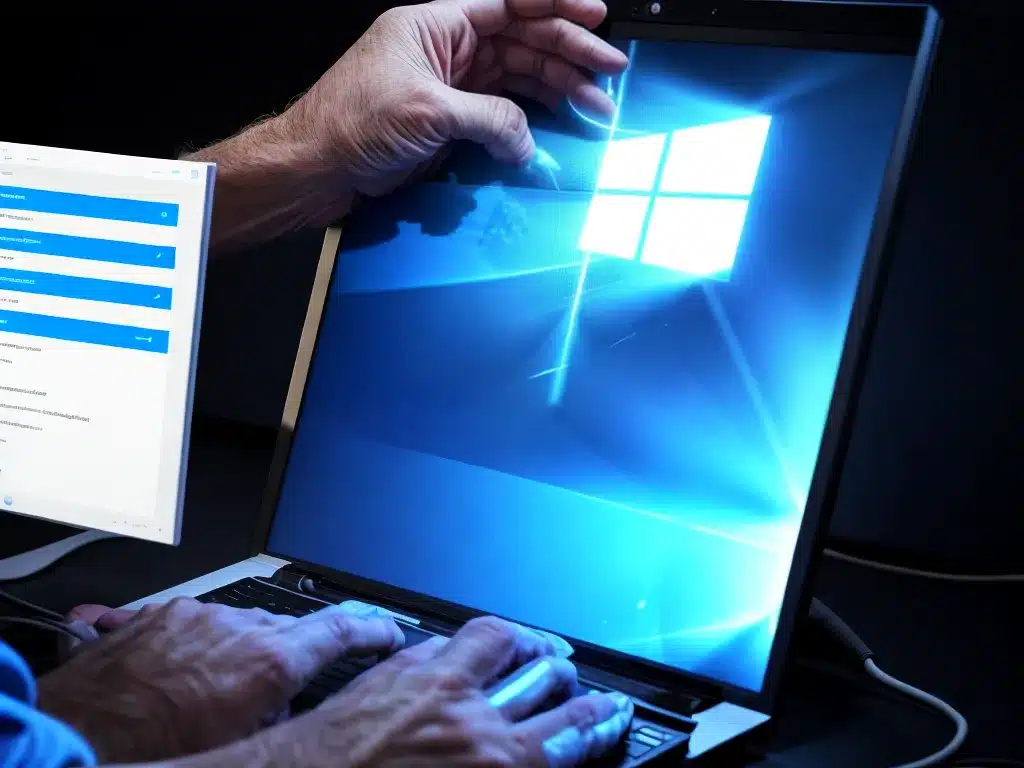
A corrupted Windows installation can cause a lot of headaches. However, in most cases, it is possible to fix the issues and get your PC running smoothly again. Here are the steps I would recommend for troubleshooting and repairing a corrupted Windows installation:
Diagnose the Issue
The first step is to figure out exactly what the problem is. Here are some common symptoms of a corrupted Windows installation:
- Frequent blue screen errors or crashes
- Failure to boot properly – gets stuck on logo screen or gives error message
- Critical system files missing or damaged
- System instability, freezes, or very slow performance
To help diagnose, I would check the event viewer (Control Panel > Administrative Tools > Event Viewer) for recent critical errors that could indicate file corruption. I would also use the sfc /scannow command in an admin command prompt to check for corrupted system files.
Startup Repair
If Windows is having trouble booting properly, I would start with the Startup Repair tool. This automated repair process might fix boot issues caused by a corrupted system file.
To access Startup Repair:
- Insert the Windows installation media and boot from it
- On the first screen, select your language and click Next
- Click Repair your computer
- Select Troubleshoot > Advanced options > Startup Repair
Startup Repair will scan and replace corrupted files. If it cannot repair the issues, it should at least generate logs to help troubleshoot further.
System File Checker (SFC)
I always run the System File Checker next. SFC scans Windows system files for corruption and replaces them from a cache.
To use SFC:
- Open an admin command prompt
- Run
sfc /scannow
This will scan all protected system files and replace corrupted ones. You may need to run it 2-3 times to repair everything.
DISM Image Cleanup
DISM (Deployment Image Servicing and Management) can fix more serious corruption in the Windows image itself.
To use it:
- Open an admin command prompt
- Run
DISM /Online /Cleanup-Image /RestoreHealth
This will scan the Windows image for corruption and automatically repair errors.
Startup Repair Again
After using DISM, run Startup Repair again. It may be able to fix additional issues after the image corruption is repaired.
Reset Windows
If none of the above options work, the nuclear option is resetting Windows. This reinstalls Windows but retains your personal files and settings.
You can reset Windows from the Windows Recovery Environment:
- Boot to installation media and select Repair
- Choose Troubleshoot > Reset this PC
- Select Keep my files
Resetting should replace any corrupted system files while preserving your data. Just reinstall apps afterwards.
Clean Reinstall
The last resort is doing a completely clean reinstall of Windows. This means erasing everything and installing from scratch.
- Back up personal files first
- Boot from installation media
- Delete all existing partitions during setup
- Install Windows on a new blank partition
A clean install ensures no corruption carries over but is time consuming. Only use it if all else fails.
Summary
- Diagnose the issue in event viewer and with sfc
- Attempt Startup Repair
- Run DISM and sfc to fix corruption
- Reset Windows as needed
- Clean install only if all else fails
With patience and the right tools, you can troubleshoot and fix most cases of a corrupted Windows installation.












